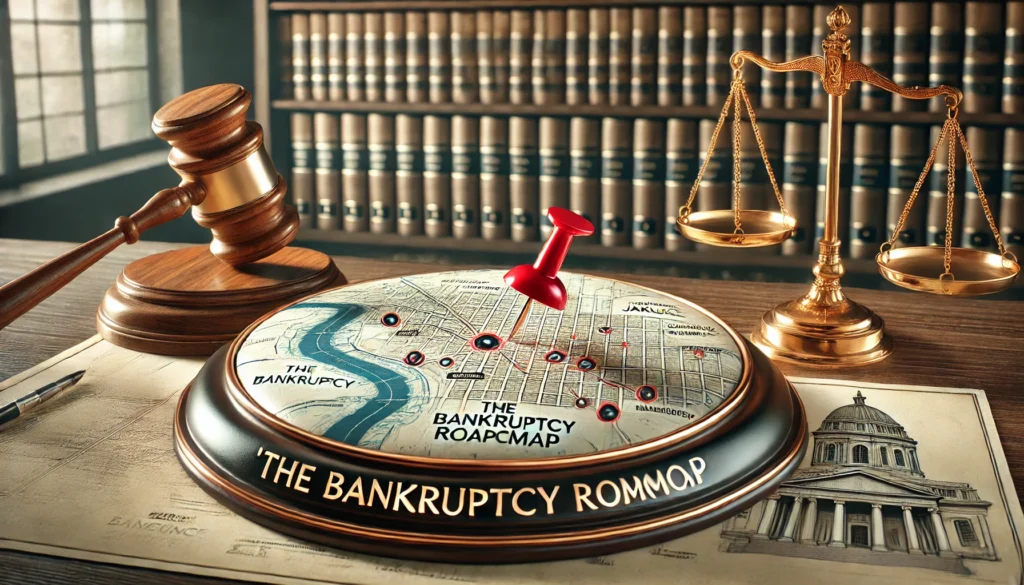Navigating the complexities of bankruptcy can be a daunting task, but it’s also a crucial step toward reclaiming your financial stability. Bankruptcy offers a structured legal framework for individuals and businesses struggling with overwhelming debt. With careful planning and adherence to the right process, you can use The Bankruptcy Roadmap to rebuild your financial health. This article outlines ten essential steps to guide you through the journey.
Understanding Bankruptcy: A Financial Fresh Start
Before embarking on The Bankruptcy Roadmap, it’s vital to understand what bankruptcy entails. Bankruptcy is a legal process designed to help individuals or entities eliminate or repay debts under court supervision. There are different types of bankruptcy, such as Chapter 7, Chapter 11, and Chapter 13, each with unique implications. Choosing the right type depends on your financial situation, income level, and goals.
Assessing Your Financial Situation
The first step on The Bankruptcy Roadmap is to take an honest look at your financial health. Compile a detailed list of your debts, assets, income, and expenses. This assessment will help you determine whether bankruptcy is the best option or if alternative solutions, such as debt settlement or credit counseling, could suffice.
Exploring Alternatives to Bankruptcy
While The Bankruptcy Roadmap is an effective tool, it’s not the only solution. Alternatives like debt consolidation, negotiation with creditors, or financial counseling may help you manage your debts without filing for bankruptcy. Consulting with a financial advisor can provide clarity on whether these options align with your goals.
Choosing the Right Type of Bankruptcy
Not all bankruptcies are created equal, and selecting the correct type is a critical step in The Bankruptcy Roadmap. For individuals, Chapter 7 and Chapter 13 are the most common options. Chapter 7 involves liquidating non-exempt assets to pay off debts, while Chapter 13 establishes a repayment plan. Understanding the differences and consulting with a bankruptcy attorney can help you make an informed decision.
Finding a Qualified Bankruptcy Attorney
Navigating The Bankruptcy Roadmap is significantly easier with the help of a qualified attorney. A bankruptcy lawyer can guide you through the complexities of the process, ensure you meet legal requirements, and represent you in court. Be sure to research and choose a professional with experience in bankruptcy law to maximize your chances of success.
Filing the Bankruptcy Petition
Filing your bankruptcy petition is a pivotal moment in The Bankruptcy Roadmap. This document outlines your financial situation and initiates the legal process. Accuracy is essential, as any errors or omissions can delay proceedings or result in the dismissal of your case. Once filed, the court will issue an automatic stay, preventing creditors from pursuing collection actions against you.
Attending the 341 Meeting of Creditors
A key milestone in The Bankruptcy Roadmap is the 341 Meeting of Creditors. During this meeting, you’ll meet with a bankruptcy trustee and your creditors to review your financial situation. While this may seem intimidating, it’s typically a straightforward process. Being prepared and honest will help ensure a smooth meeting.
Completing Financial Education Courses
As part of The Bankruptcy Roadmap, you’ll need to complete two financial education courses: pre-filing credit counseling and post-filing debtor education. These courses aim to equip you with the skills and knowledge to manage your finances effectively and avoid future financial difficulties. Certification of completion is required for your bankruptcy discharge.
Receiving Your Bankruptcy Discharge
The ultimate goal of The Bankruptcy Roadmap is to receive a discharge of your debts. This legal order releases you from personal liability for certain debts, giving you a fresh financial start. Depending on the type of bankruptcy, this could take a few months (Chapter 7) or a few years (Chapter 13). A discharge marks the end of the bankruptcy process and the beginning of your financial recovery.
Rebuilding Your Financial Stability
The final step on The Bankruptcy Roadmap is rebuilding your financial stability. Start by creating a realistic budget, building an emergency fund, and monitoring your credit report for accuracy. Gradually, you can re-establish your credit by using secured credit cards or small loans and paying them off on time. With discipline and persistence, you can lay a solid foundation for a secure financial future.
Conclusion
The Bankruptcy Roadmap is a structured guide that can lead you from financial turmoil to stability. While the journey may seem challenging, it provides a legal and practical framework for addressing overwhelming debt. By understanding the steps, seeking professional guidance, and committing to rebuilding your finances, you can reclaim control and pave the way for a brighter future.
Article Recommendations
Bankruptcy Laws Demystified: What You Need to Know Before Filing
Life After Bankruptcy: Strategies for a Fresh Financial Start
From Debt to Freedom: Understanding the Bankruptcy Process
Bankruptcy and Beyond: Navigating the Legal, Financial, and Emotional Impact

